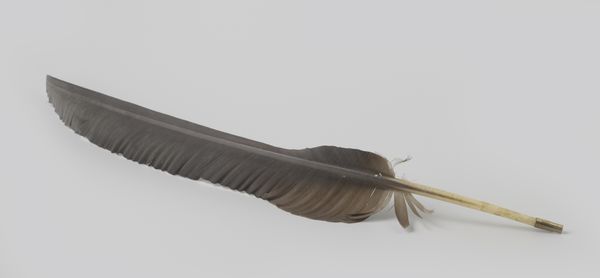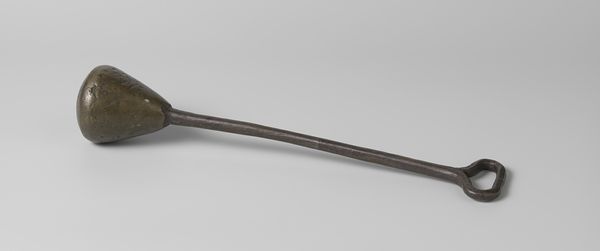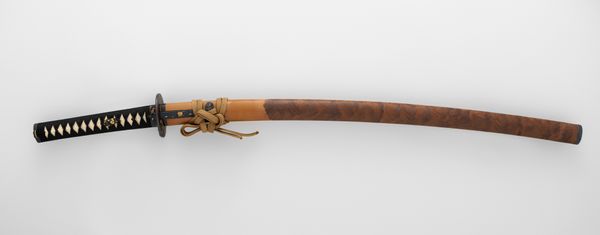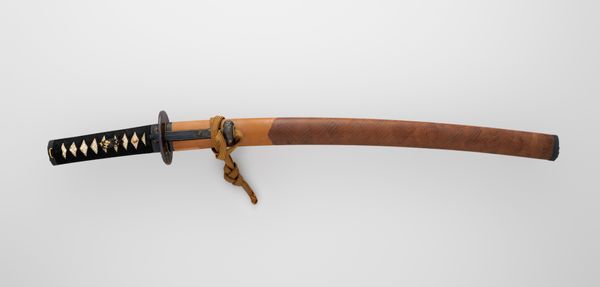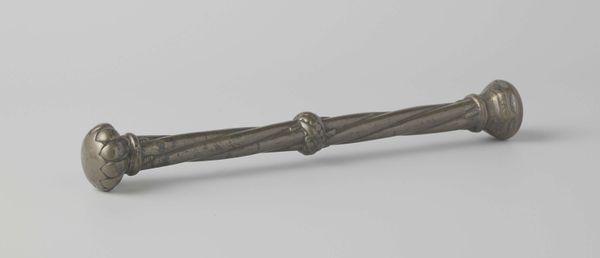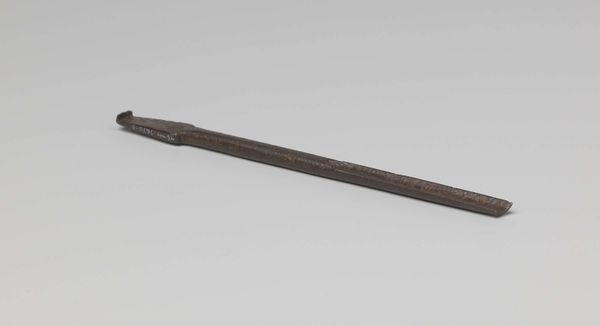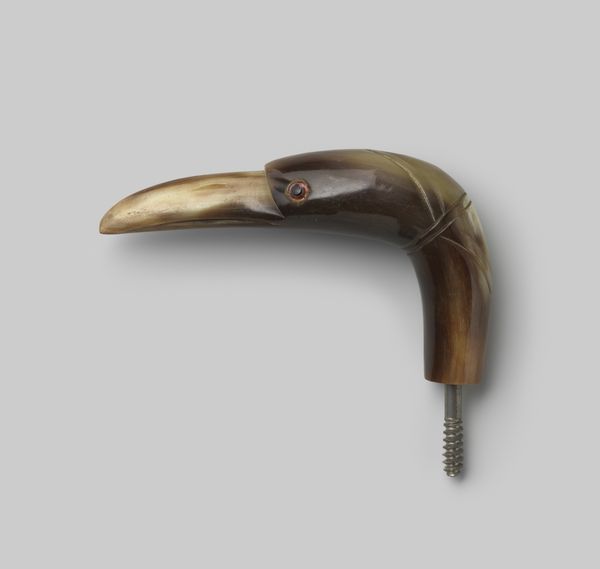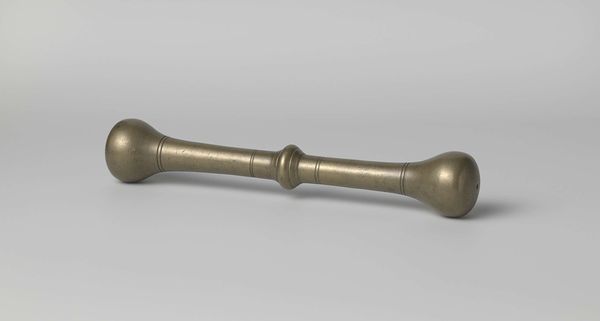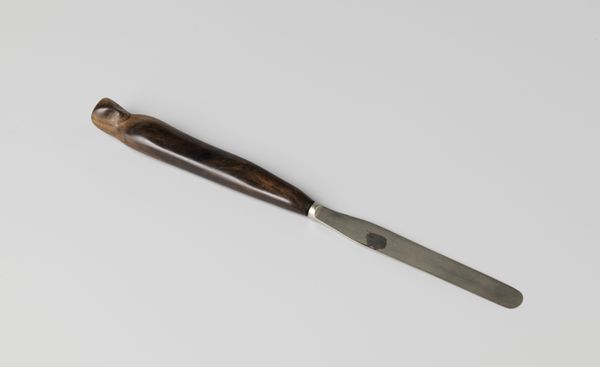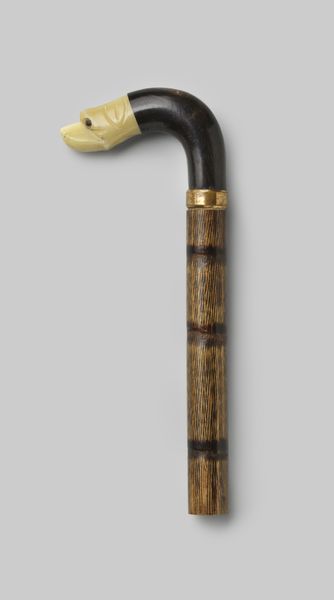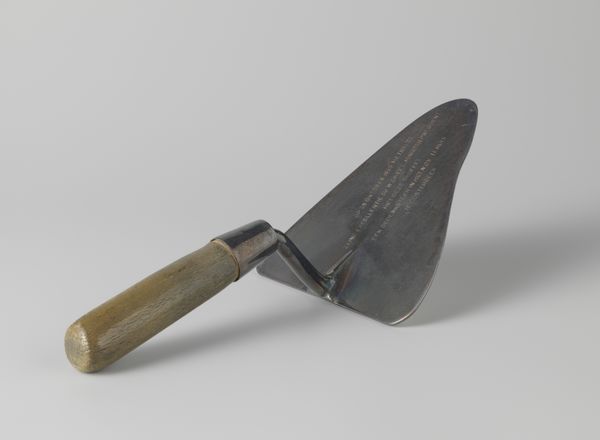
silver, metal, sculpture, wood
#
silver
#
baroque
#
dutch-golden-age
#
metal
#
sculpture
#
wood
#
decorative-art
Copyright: Rijks Museum: Open Domain
Editor: Here we have a "Drinkhoorn" created around 1609, a decorative sculpture rendered in silver and wood. The curling form gives it a lovely, sinuous quality. What stands out to you about the object? Curator: Its formal elegance is quite compelling. Notice the curvilinear form and how the artisan modulated the material's textures to define volume. The visual weighting achieved with the metallic elements, especially at both ends, anchors this piece sculpturally. It creates balance, wouldn't you agree? Editor: I see that, especially with the spherical form at the end – a perfect counterpoint to the drinking spout. But what about the rougher texture of the horn itself? Does that play into the formal aspects you are discussing? Curator: Precisely! That variance in texture contributes depth and an aesthetic tension that might otherwise be lacking. Observe how the reflective quality of silver juxtaposes with the relative matte surface and tonal variations found on the horn, to define a hierarchy of material and aesthetic appeal. Do you notice the linear quality that encircles both metallic components? Editor: Yes! It provides another tier of depth. Are there other details worth mentioning? Curator: Definitely. Note the Baroque sensibility in the ornamental and rather ornate flourishes of this work. Its elegance resides in both its construction and inherent formalism of this stunning sculptural piece. Editor: Thank you; your expertise has expanded my viewpoint of this striking artifact. Curator: Likewise.
Comments
No comments
Be the first to comment and join the conversation on the ultimate creative platform.
